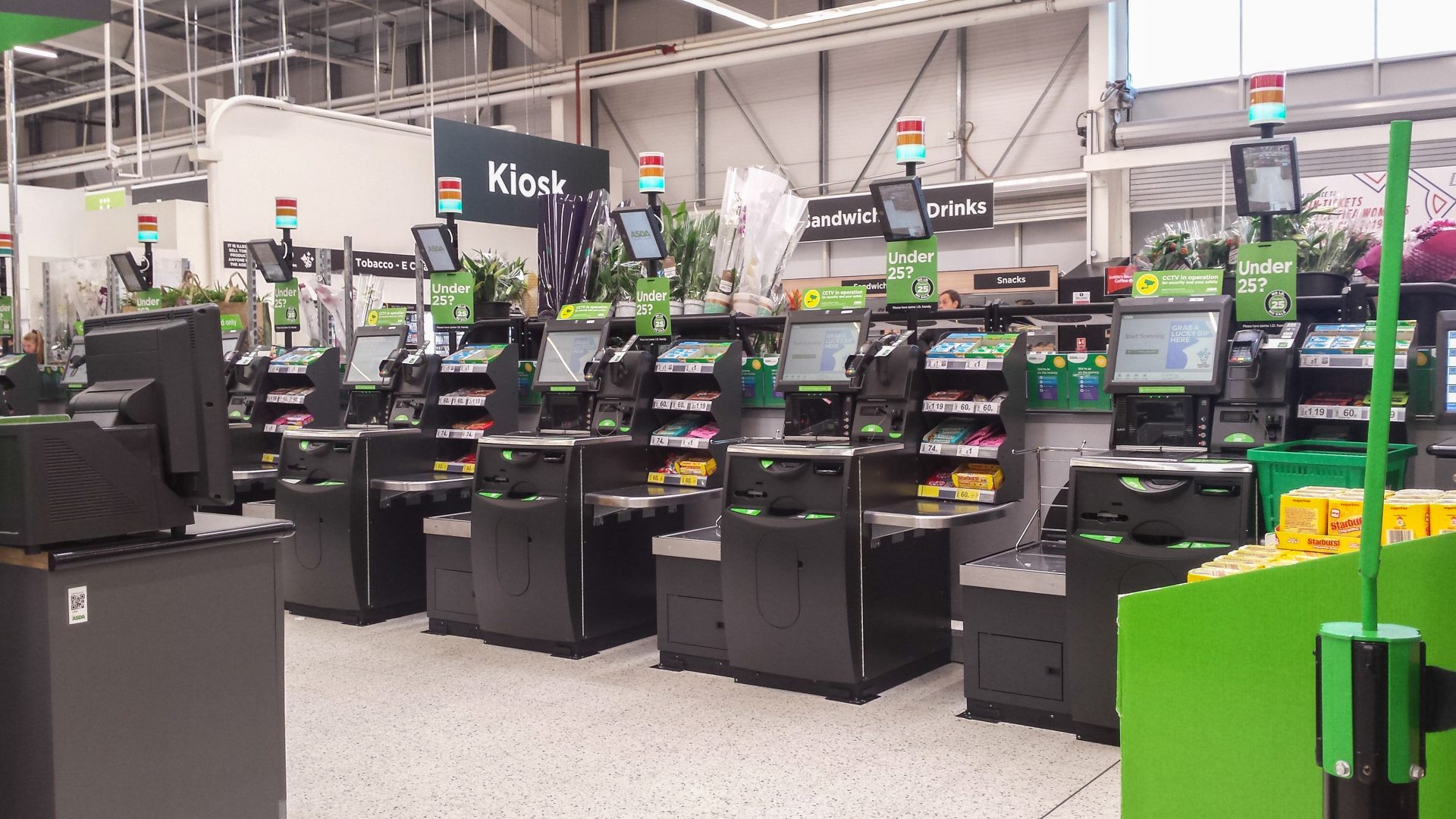Walmart’s recent decision to eliminate self-checkout stations from select locations has sent shockwaves through the retail industry, marking a significant departure from the automation trend that has dominated shopping experiences for over a decade. The retail giant’s strategic pullback represents more than just a simple operational adjustment—it signals a fundamental reevaluation of how technology intersects with customer service and loss prevention in modern retail environments.
The move comes as retailers across the nation grapple with the unintended consequences of self-service technology that was once hailed as revolutionary. What began as a promise of streamlined shopping experiences and reduced operational costs has evolved into a complex challenge involving security concerns, customer satisfaction issues, and the delicate balance between efficiency and human interaction.
The rise and fall of self-checkout enthusiasm
Self-checkout technology emerged in the late 1990s as a solution to long checkout lines and rising labor costs. Retailers embraced these systems with enthusiasm, viewing them as the ultimate marriage of convenience and cost-effectiveness. Major chains invested heavily in the technology, believing it would transform the shopping experience while simultaneously reducing overhead expenses.
For years, the narrative surrounding self-checkout remained largely positive. Customers appreciated the control over their shopping pace, particularly during quick trips or when purchasing sensitive items. Retailers celebrated the reduced need for cashier positions and the ability to process more transactions with fewer staff members on duty.
However, the honeymoon period gradually gave way to growing concerns about the technology’s effectiveness and impact on both business operations and customer relationships. What initially appeared to be a win-win solution began revealing significant drawbacks that many retailers hadn’t fully anticipated during the implementation phase.
Security challenges mount across retail locations
The most pressing issue driving Walmart‘s decision involves theft and security concerns that have plagued self-checkout systems since their widespread adoption. Loss prevention experts have long warned about the vulnerability of unmonitored checkout processes, where customers essentially police themselves during the payment process.
Retail theft statistics paint a concerning picture for stores heavily reliant on self-checkout technology. Industry data suggests that shrinkage rates — losses due to theft, fraud, and administrative errors — tend to be higher in stores with extensive self-checkout operations compared to traditional cashier-assisted locations.
The problem extends beyond intentional theft to include honest mistakes and technical malfunctions that result in unpaid merchandise leaving stores. Customers struggling with barcode scanning, weight sensors, and age verification prompts often create situations where items accidentally bypass the payment process entirely.
Walmart’s targeted approach to removing self-checkout machines focuses primarily on locations where these security challenges have proven most problematic. The company’s data-driven strategy identifies specific stores where theft rates and operational difficulties have reached unacceptable levels, rather than implementing a blanket removal policy across all locations.
Customer frustration reaches tipping point
Beyond security concerns, mounting customer dissatisfaction has played a crucial role in Walmart’s decision to scale back self-checkout operations. Shoppers have increasingly voiced complaints about the technology’s reliability, user-friendliness, and impact on their overall shopping experience.
Common frustrations include malfunctioning scanners, overly sensitive weight sensors, frequent need for employee assistance, and lengthy wait times when problems occur. Many customers report feeling stressed and rushed while using self-checkout machines, particularly when purchasing large quantities of items or dealing with age-restricted products that require staff verification.
The demographic divide in self-checkout adoption has also become increasingly apparent. While younger, tech-savvy shoppers often navigate these systems with relative ease, older customers and those less comfortable with technology frequently struggle with the interface and requirements.
Additionally, the promise of faster checkout times has proven largely illusory for many shoppers. Technical difficulties, machine malfunctions, and the learning curve associated with proper scanning techniques often result in longer transaction times compared to traditional cashier-assisted checkout lanes.
Economic implications of automation rollback
Walmart’s decision carries significant economic implications that extend far beyond the immediate operational changes. The initial investment in self-checkout technology represented millions of dollars in equipment, installation, and training costs that must now be weighed against the ongoing expenses associated with theft, maintenance, and customer service issues.
The labor market impact of removing self-checkout machines presents both challenges and opportunities. While the technology was initially implemented to reduce staffing needs, its removal necessitates hiring additional cashiers and customer service representatives to maintain adequate checkout capacity during peak shopping periods.
However, this shift also addresses growing concerns about job displacement in the retail sector. Labor advocates have long criticized self-checkout systems for eliminating entry-level positions that traditionally served as stepping stones for workers entering the retail industry.
The financial calculations surrounding self-checkout effectiveness have become increasingly complex as retailers factor in theft losses, maintenance costs, customer satisfaction metrics, and labor market considerations. Walmart’s decision suggests that the total cost of ownership for self-checkout systems may exceed initial projections when all variables are properly accounted for.
Industry-wide reassessment of automation strategies
Walmart’s move reflects a broader industry trend toward reassessing the role of automation in retail environments. Other major retailers have begun questioning the wholesale adoption of self-service technologies, particularly in light of changing consumer preferences and operational realities.
The pandemic initially accelerated self-checkout adoption as retailers sought to minimize human contact and reduce staffing requirements. However, as shopping patterns return to pre-pandemic norms, many companies are discovering that customer preferences have evolved in unexpected ways.
Retailers are increasingly recognizing that successful automation requires careful consideration of store format, customer demographics, product mix, and local market conditions. The one-size-fits-all approach to self-checkout implementation is giving way to more nuanced strategies that balance efficiency with customer service and security requirements.
The future of retail checkout experiences
As Walmart and other retailers navigate this technological crossroads, the future of checkout experiences appears likely to involve hybrid approaches that combine automated and human-assisted options. This balanced strategy acknowledges that different customers have varying preferences and comfort levels with self-service technology.
The key to success lies in creating flexible checkout environments that can adapt to diverse customer needs while maintaining operational efficiency and security standards. This may involve maintaining self-checkout options for quick purchases while ensuring adequate staffing for customers requiring assistance or preferring human interaction.
Ultimately, Walmart’s decision to remove self-checkout machines from select locations represents a pragmatic response to real-world challenges that many retailers face but few have been willing to address publicly. The move signals a maturation in the industry’s approach to retail automation, prioritizing effectiveness over technological novelty.


















